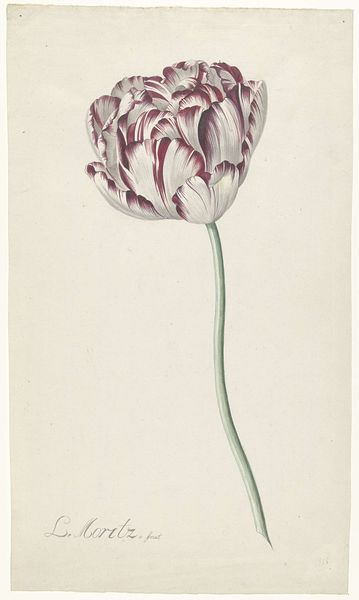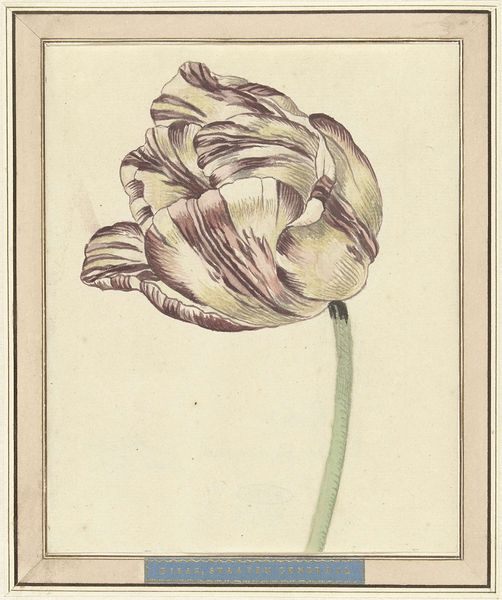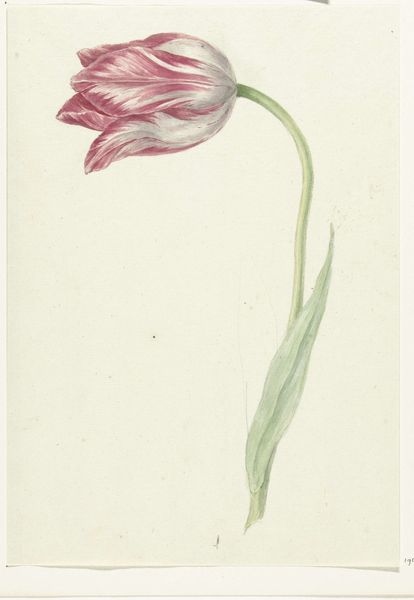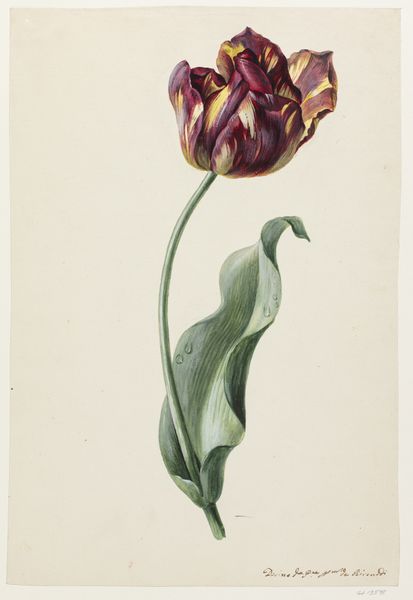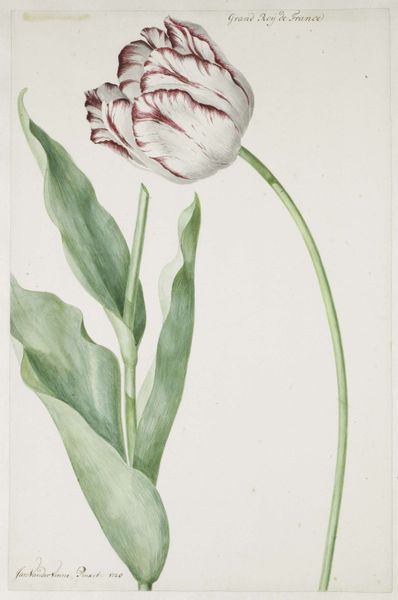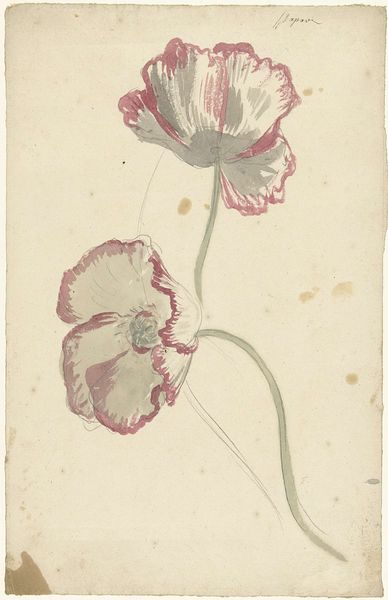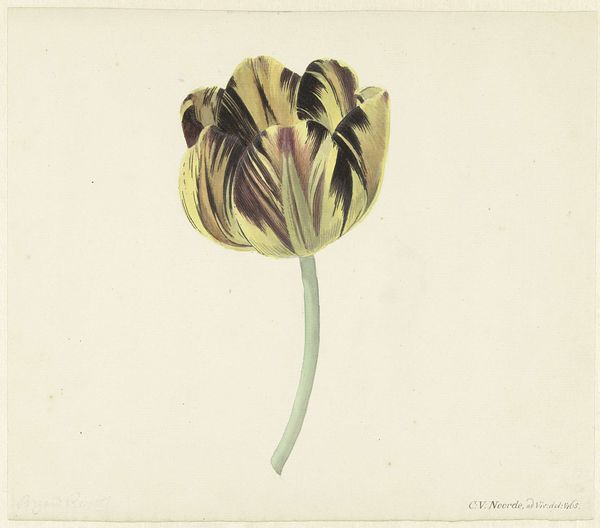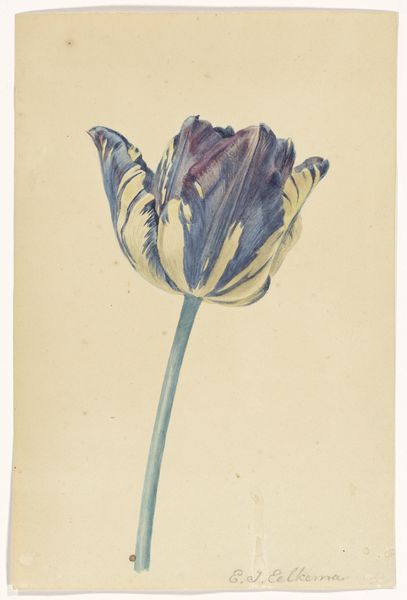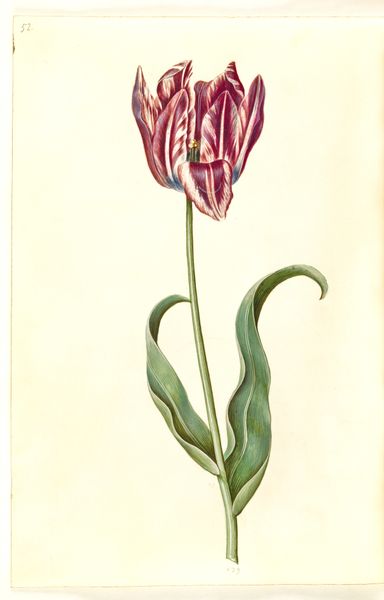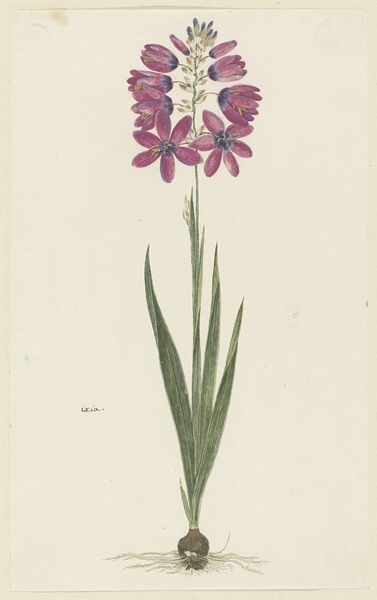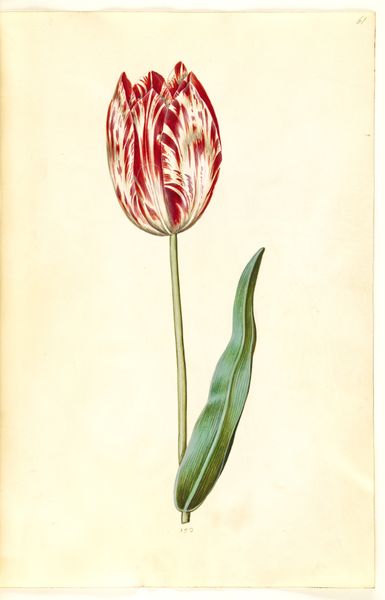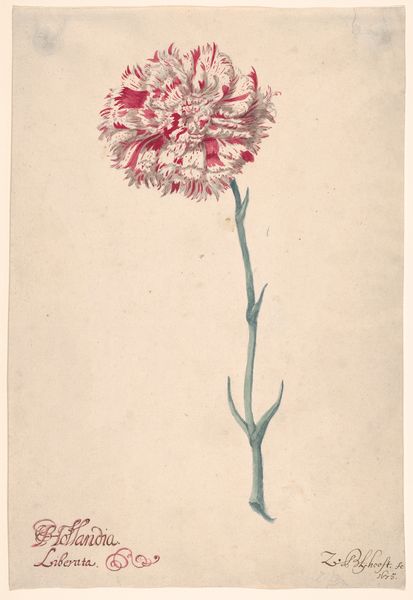
painting, paper, watercolor
#
painting
#
paper
#
watercolor
#
line
#
botanical art
#
watercolor
#
realism
Dimensions: height 442 mm, width 275 mm
Copyright: Rijks Museum: Open Domain
Curator: This is "Tulip", a watercolor on paper by Louis Moritz, created sometime between 1783 and 1850. It resides here at the Rijksmuseum. What strikes you initially? Editor: The quietness. It’s solitary. That singular bloom centered against the creamy paper evokes such a sense of stillness. And the intricate flamelike patterns, white striated with that regal purple... they feel both opulent and fragile. Curator: The tulip, of course, carried heavy symbolic weight, particularly in the Dutch Golden Age. The so-called Tulip Mania represented not just economic folly, but a deeper societal fascination with exotic imports, status, and the transient nature of beauty and wealth. Paintings like this were part of that world. Editor: Exactly! Those connotations echo even now. The tulip, even divorced from its historical moment, retains that symbolic link to luxury. This rendering captures something more, a kind of restrained indulgence through the precision of line and that careful detailing. Do you know the variety it shows? It reminds me of those ‘broken’ tulips. Curator: You’re astute. Indeed the "broken" tulips, prized for their vibrant patterns, were, as we now know, infected with a virus! It damaged their value and also shows that things we appreciate could in turn harm something, almost a natural allegory. Editor: So this artwork almost by definition carries within it a complex reading. It becomes a poignant representation of beauty born from disease, fragility intertwined with the promise of new wealth and trade. Curator: Absolutely, and botanical art like this gained momentum through scientific pursuits alongside these speculative bubbles. Botanical illustrations weren't just aesthetic pursuits. They were documenting the world, classifying its contents, shaping imperial knowledge and aspirations. The plants they brought back. Editor: Thinking of it that way brings another nuance. That one flower speaks of voyages, exploitation, and this impulse to catalog, collect, and own the natural world and its beauty, not just trade in it. Thank you. I wouldn't have noticed. Curator: A wonderful example of how the beauty of form meets social and political implications. Thanks for joining.
Comments
No comments
Be the first to comment and join the conversation on the ultimate creative platform.
